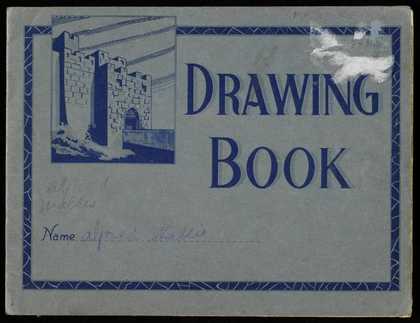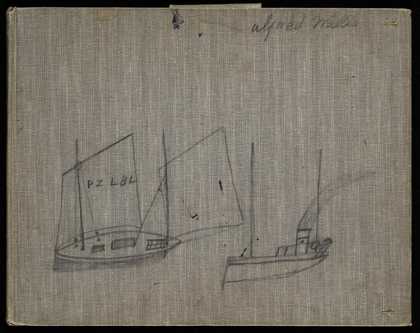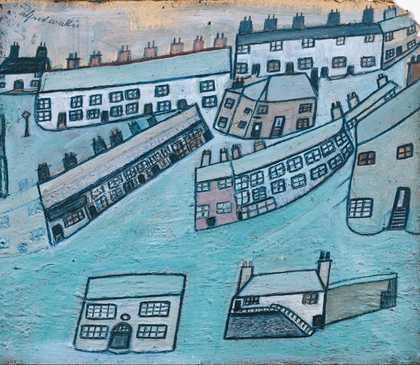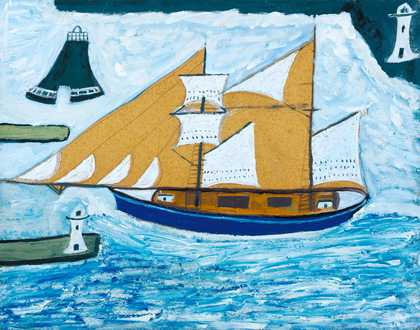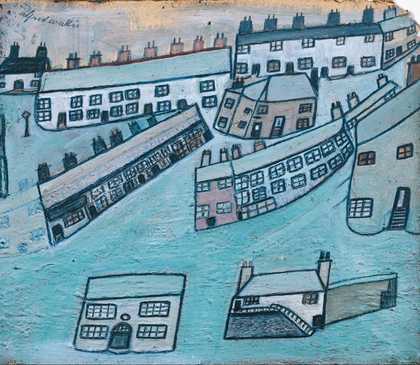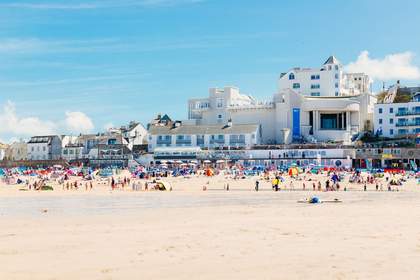Hi, I'm Verity and I'm here in St Ives, a coastal town in Cornwall. Artists have flocked here since the Victorian times, attracted by the light and the landscape, making St Ives a hub for modernism, abstract art, and pottery.
One of St Ives' best known artists was the painter Alfred Wallace. He was a deeply religious and private man and he lived here at Back Road West, just a short walk from Tate St Ives.
Wallace was born in Devon and in his youth worked as a cabin boy and cook out at sea. He moved to Cornwall around 1880 and worked as a fisherman, mariner, and later as a rag and bone man.
He's also rumoured to be the first person to sell pink ice cream here.
Thanks Alfred!
Wallace started painting for company in his 70s, following the death of his wife Susan and to keep loneliness at bay. And once he started painting, he never stopped.
Not formally trained, Wallace was an artist who followed his instinct, painting largely from memory and imagination, giving his work an earnest authenticity that a lot of artists strive for.
St Ives as a location was at the heart of Alfred's work, and his art tells his stories of living along the coast and his experiences at sea.
When you see Wallace's paintings, it's almost as if you could jump right into them. Alfred made his work using scrap everyday materials and he often used paint left over from the boating industry.
Two-mastered ship was painted on the back of a Great Western Railway fair schedule, and Two Boats was painted on a Selfridges box.
These materials were not only convenient and affordable, they were also an artistic choice that reflected his working background, collecting local materials and making something new.
Not only do the works themselves depict life in St Ives, but the physicality of the paint and the surface tell their own story too.
Wallace was almost entirely unknown, until one day in 1928, when the artist Ben Nicholson and Christopher Wood, (both with their own growing reputations) walked past his cottage and saw him working at the kitchen table.
They helped him to sell and exhibit his work in London, propelling him into the circles of some of the most progressive artists working in 1930s Britain.
Sadly towards the end of his life, Wallace struggled with his mental health and feelings of isolation. Unable to take care of himself or work, he moved into the Madron Poor House near Penzance.
Whilst there his need to create art continued. Luckily, Tate and Kettle's Yard have acquired the final 3 sketchbooks Wallace kept during this period of his life.
A rare survival, the crayon and pencil drawings as well as some paintings are made in children's notebooks that were provided by Nicholson.
The drawings in these sketchbooks are significant for a number of reasons. Not only do they show the first time Wallace used traditional art materials, but unlike his paintings which are almost impossible to date, we can flick through the drawings in this sketchbook sequentially giving us an intimate glimpse into Wallace's memory unfolding before us.
They reveal memories of Wallace's life as a mariner, creating a catalogue of the motifs seen throughout his artistic career and act as a record of a vanishing past Cornish life, the boats in these drawings changing from sailboats to steam.
Alfred Wallace died in 1942 aged 86. Determined that he wouldn't be forgotten, Ben Nicholson and friends arranged for the potter Bernard Leach to design Alfred's grave.
The gravestone reads "artist and mariner" and shows a tiny sailor at the foot of a towering lighthouse. This image feels fitting for a self-taught artist whose work had a seismic impact on Modern British art.
